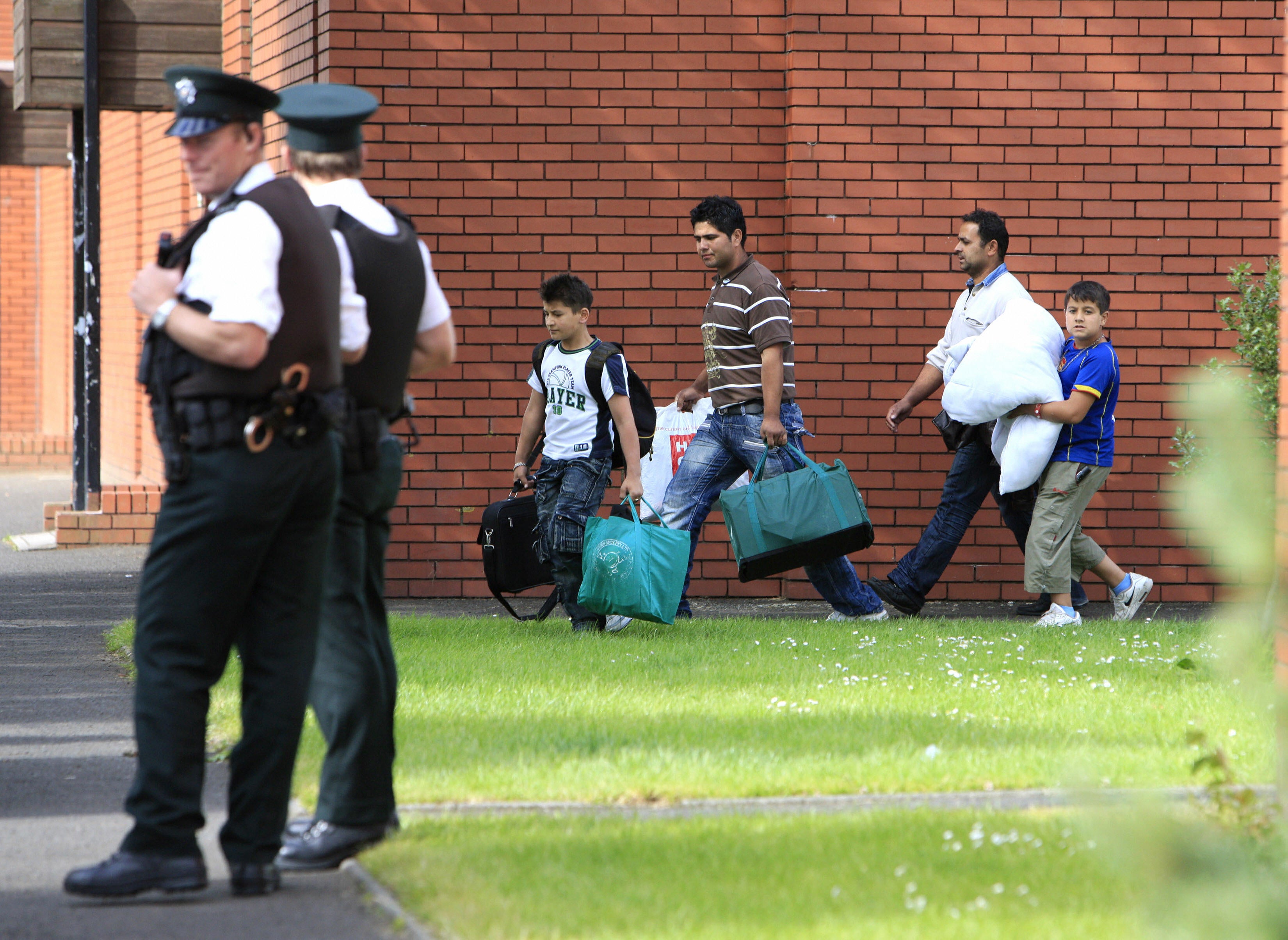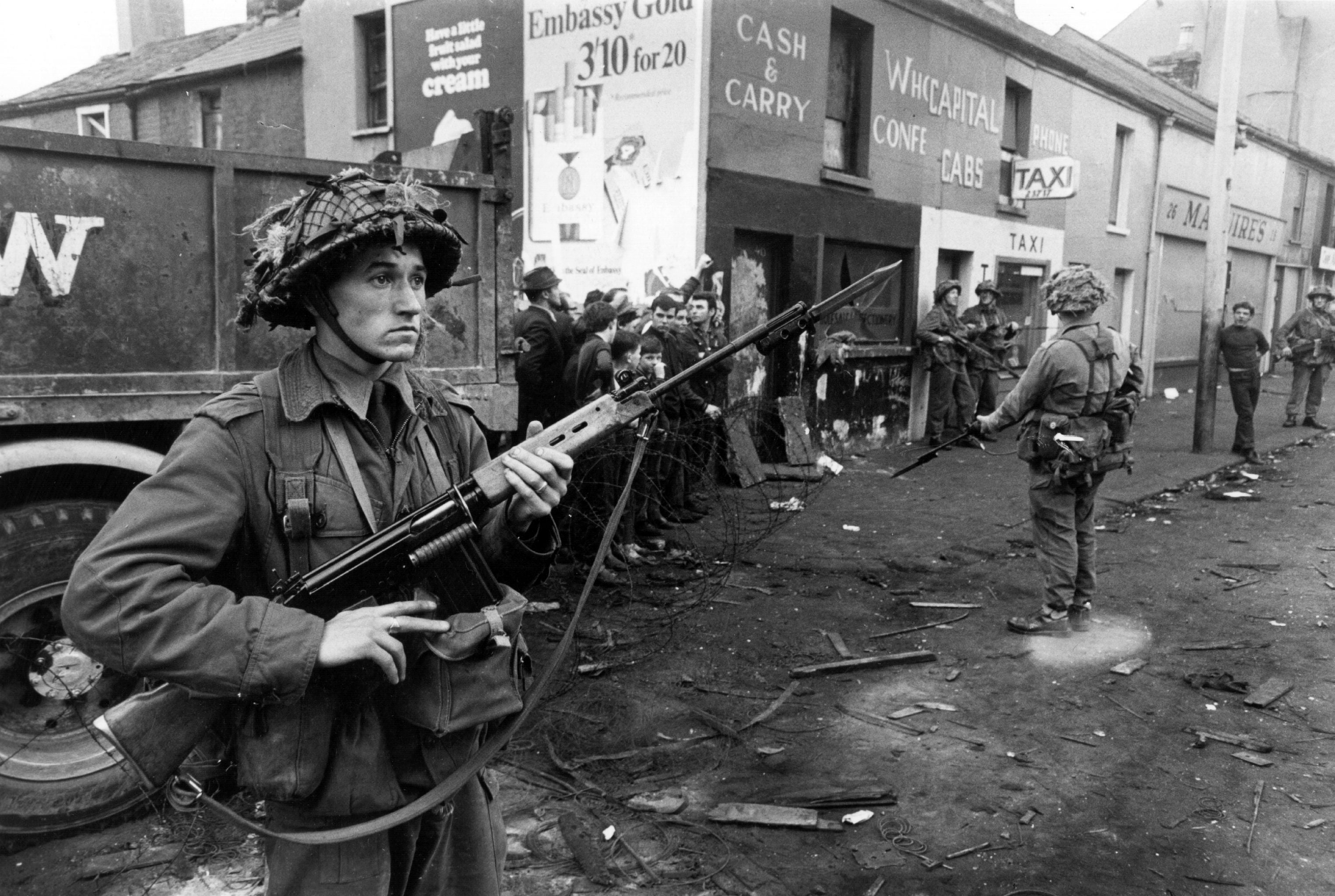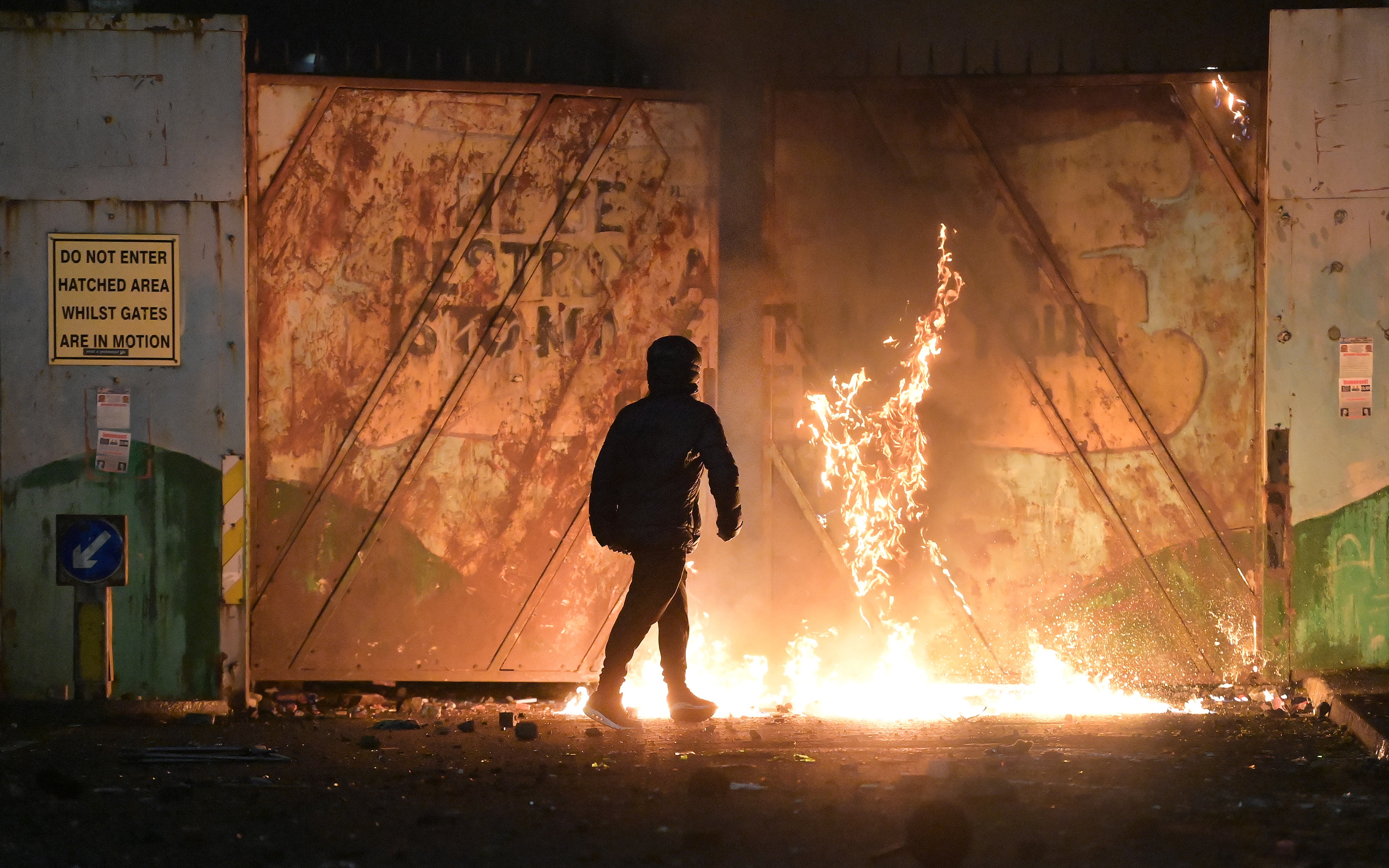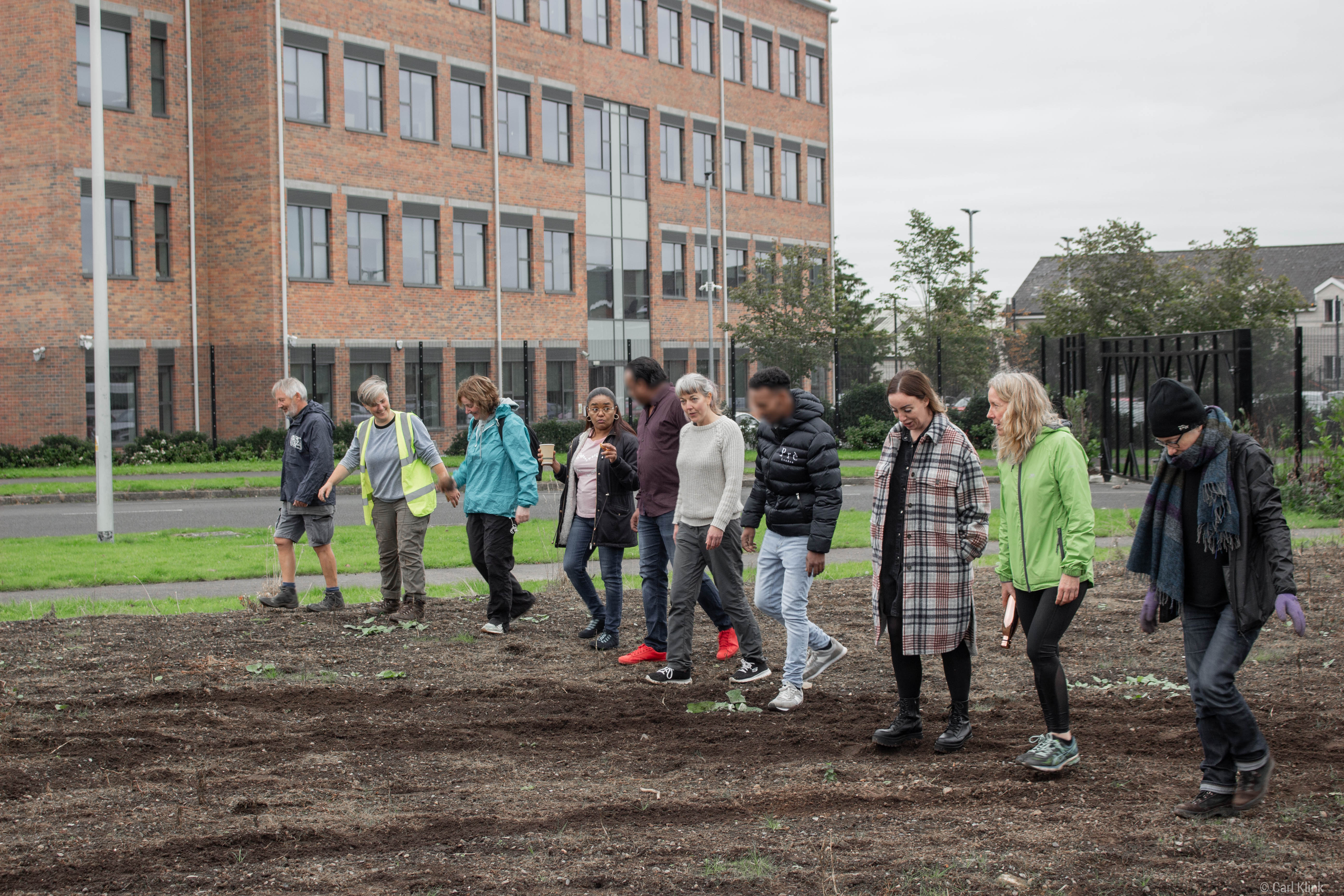Racism epidemic shows Northern Ireland has not learned from its past
Racist attacks are now more widespread in Northern Ireland than sectarian violence, and many bear the hallmarks of times gone by. Tommy O’Callaghan and Margherita Santus report

Northern Ireland is becoming more diverse but newcomers still stand out more than they would like to. For Muneera, a mother of three from Sudan, to blend in and become part of one of Belfast’s neighbourhoods was the ultimate dream. Five years ago, she escaped the turmoil of the Bashir regime and left everything behind as her family made for Belfast.
Arriving at the UK is known as “the big victory” back home. After two anxious years of being processed through various hostels, Muneera thought that victory had finally come. In 2016, her asylum application was approved, and in 2018 she was offered social housing at a new development on East Belfast’s Beersbridge Road.
Three nights later, the night before Muneera and her family moved in, 15 of the house’s windows were smashed and the words LOCAL ONLY were sprayed across its walls. Police told Muneera the attack was probably carried out by rogue teenagers, but found no suspects. Muneera doubts that narrative, recalling how she felt watched every time she went to view her house during its construction.
“I remember going to the neighbours afterwards to ask if the area is safe,” she recalls despondently. “Some of them said the family who did it were just jealous of [asylum seekers] ‘getting new houses in new complexes’.”
Politics don’t change quickly in the north of Ireland. A testy, somewhat nervous peace is rigidly maintained by fences, walls and barbed-wire barricades. Murals turn public spaces into brandished commemorations for partisan martyrs. Loyalist flags make their roads a permanent military procession, a home-coming party for the ghosts of the Somme, or the Warrenpoint ambush. The silent fanfare secretly tells you who is and who is not welcome.
To this day, no one has been charged for the attack on Muneera’s house. After a bleak conversation with the East Belfast community development agency, in which she was told the attacks would likely continue were she to move in, Muneera unpacked her family’s belongings and stayed put at the hostel.

“I did this not for me, but for my daughters’ safety,” she says. “My husband goes to work at night, and we would be by ourselves. I worried we would be uncomfortable all the time.”
Her family stayed in their hostel limbo another three months before moving to a council flat in North Belfast, which Muneera says is infested with mice. They remain on the social housing waiting list, awaiting their fifth move in five years. The recent birth of Muneera's third child has made their one bedroom and one box room a tight squeeze. They continue to face regular intimidation.
“When my daughter is outside, an older neighbour tells her ‘don’t ever play here again,’” she tells us. “So she can’t play in front of her own house? It gets too difficult when you move to a different country and you feel unwelcome here.”
Attacks like this all too common. Many Northern Irish are quick to point out that racism is a relatively new and minor problem here. At first glance, the country’s racist hate-crime rate does seem significantly lower than in the rest of the UK. However, these figures do not paint the full picture, as Northern Ireland’s non-white population is also decidedly small at just 1.7 per cent of the total. On a per capita basis, a minority in Northern Ireland is over twice as likely to be the victim of a racist hate crime than a non-white person in England and Wales.

These figures do not factor in a culture of underreporting racist attacks (said to diminish official figures by up to five times), nor do they reflect the low level of racist incidents that led to a policing outcome: just 10 per cent, as opposed to 29.8 per cent for all crimes. Racist hate crimes have outnumbered sectarian hate crimes in Northern Ireland every year since 2016. With all the fences, and with political parties and national conversations solely directed towards curbing sectarianism, the country now risks becoming a safe haven for racists.
While it seems almost certain that the people behind these attacks have paramilitary links, the extent to which it’s endorsed by the leaders of those organisations remains in doubt
According to Daniel Holder, deputy director of humanitarian NGO Committee on the Administration of Justice, paramilitaries maintaining grassroots influence in some working-class communities continue to spook those in charge.
“One of the major factors in the low [racist hate crime] conviction rate is the involvement of significant elements of mostly loyalist paramilitaries,” he explains. “This is part of a broader ideology of racist and sectarian control of territory by those paramilitary groups, deciding who is allowed to live in a particular area.”
Holder sees a connection. “Police downplay their involvement,” he says, “but people are regularly being moved from their houses on the basis that there’s a credible risk of death or serious injury. So who can that threat be coming from? Authorities will even go as far as to record it as paramilitary or racist intimidation, but then no information will be put out to find a pattern of organisations suspected as being behind the threat.”

The most recent figures – recorded in 2018 – show that 19 households reported racial housing intimidation to the Northern Ireland Housing Executive (NIHE), and that 425 households reported paramilitary intimidation. There is no data to indicate which racist attacks had paramilitary involvement. For a migrant family, often with little knowledge of Northern Ireland, that link is not always obvious, especially when attackers act in the dead of night and may then have the power to enforce a community omerta for cover.
Activists at Participation and the Practice of Rights (PPR), a human rights campaigning group, report the repeated use of weapons traditionally associated with paramilitaries, such as handguns and pipe bombs, in attacks against migrants. Loyalist paramilitaries have a long history of using these weapons; handguns are especially difficult to obtain for those outside of organised violent groups in Northern Ireland.

While it seems almost certain that the people behind these attacks have paramilitary links, the extent to which it’s endorsed by the leaders of those organisations remains in doubt. It is widely reported that criminal gangs, whose low-level memberships have some crossover with paramilitaries, stoked the loyalist violence against the Northern Ireland protocol this spring. Peter Shirlow, professor in Irish Studies at the University of Liverpool, doubts that racism is a primary issue for paramilitary leaders.
“If you walk into Act on the Shankill Road,” Shirlow argues, “which is a community group linked to the UVF, ‘You cannot be a loyalist and a racist’ is on the first banner you see. They’re clearly working strenuously against racism.”
Samaah’s story shows us that Northern Ireland’s institutions need more than a mere reconsideration of how seriously they take racist hate attacks
Whether these groups are directly or indirectly involved in Northern Ireland’s racist attacks, they certainly influence how they are policed. According to Holder, the practice of “community consensus”, whereby an intermediary negotiates between paramilitaries and public authorities over low-level hate incidents, is commonplace. Inspector Andrew George, a Belfast-based policeman and president of the UK National Black Police Association, admits that the possibility of sectarian flare-ups also affects how issues like racism are treated.
“These issues get tied up in our legacy, and police commanders sometimes have to take in a number of different issues,” George says. “Unfortunately, in Northern Ireland we do have to take the community impact into account, and racism can definitely get downplayed. That repeatedly devalues victim experiences.”
Even though it took the Police Service of Northern Ireland (PSNI) three months to move Muneera, swift relocation has typically been their main response to intimidatory attacks since the 1970s. The policy is often efficient, in that it removes the imminent danger to the victim, but it is impractical in that it allows purist, “get-them-out” community campaigns to persist. As a knee-jerk reaction to violence, it also allows more “minor” forms of intimidation to go under the radar.

For Samaah, “minor” racist harassment at home was a daily reality. Having been issued a flat in South Belfast after gaining refugee status in 2015, her family soon learned that the PSNI would regularly visit their neighbour. The locals and the police kept his crimes and identity hidden from Samaah. A different neighbour next door started regularly banging the wall and shouted racist slurs at the slightest sound of laughter from Samaah’s son. Samaah’s son is so scarred by the racket that he has even taken to hushing his friends’ laughter in the classroom because he fears the neighbour might hear. A teacher referred the child, aged six, to mental health services for the habit.
Unsatisfied with Samaah’s continued presence in the house, the neighbour moved from banging her wall to banging her front door, demanding to come in.
“My husband works night shifts,” Samaah tells us. “He would wait for my husband to leave, then he would come and say bad things.” When the nighttime intimidation campaign failed to move Samaah from her home, the neighbour took to standing outside her house in broad daylight, pointing to the electronic tag around his ankle, a gesture Samaah understood as a threat.

Instead of supporting Samaah, others on the street joined in the harassment campaign. One repeatedly filled her bins with rubbish. After another neighbour told her to go back to her country, her son asked: “Where is my country? Where am I from?” “I don’t know how to answer him. He is six years old.” Sammah said to me later. “I don’t need him to know what is white and black, what is Muslim and Christian.”
At the time of interview, Samaah had been temporarily moved to distant countryside social housing. One week later, her request to be permanently moved back to a safe, more accessible location was once again denied by the NIHE. Two years of requests, GP letters and video evidence were not enough to prove the family was in danger, and they were moved back to the same South Belfast house. An NIHE officer blamed her for making herself and her sons “homeless” and instructed her to wait patiently.
“Wait for what?” Samaah wonders despairingly. “Till something happens to my kids?”
Though Northern Ireland’s tribes have stopped warring in the official sense, the post-conflict haze has turned it into a relic of more violent times
Samaah also alleges that the PSNI instructed her to install cameras, recommended she move house, and even registered the more violent attacks as hate incidents, but they failed to acknowledge her as an intimidation victim.
Samaah’s story shows us that Northern Ireland’s institutions need more than a mere reconsideration of how seriously they take racist hate attacks. To give vulnerable communities true security, they need access to safe, mixed-community social housing. But with over 44,000 households on the housing waiting list, and with 20,000 homeless families, the NIHE’s hands are tied, forcing residents like Samaah into a means-tested race to the bottom, in which they must make do with squalor and hostility. Add segregation to the housing scarcity – only 6 per cent of Belfast’s social housing is mixed between Catholic and Protestant households – and paramilitaries are empowered to step in and gate-keep their community’s remaining housing distribution.
“When asylum seekers and refugees are availing of our public housing system, they’re going into a deeply divided sectarian system. And that puts them in danger,” says PPR activist Sean Brady.

The finger is usually pointed at loyalist, rather than republican paramilitaries: statistics show that racist hate crimes are significantly higher in Belfast’s predominantly loyalist areas. But housing shortage is a key factor in that discrepancy too. Refugees are much likelier to be offered social housing in loyalist areas, where birth rates are declining fastest and demand is lower.
Just beyond the end point of West Belfast’s largest peace wall, which separates the infamous Shankill and Springfield Roads, lies a 25-acre green patch. The soil beneath a former textile factory is contaminated, but PPR is planting a small garden there. “A small sign of protest,” they say. The group had earmarked it as the perfect site for social housing development. A mixed community development here may well have alleviated West Belfast’s housing shortage, wrestled the gatekeeper role from the paramilitaries and provided safety for newcomers. Instead, it is being turned into a community greenway.
Rashad is one of the refugees who might have lived in that site. He is at the garden, shovel in hand and with a kind smile that hides years of wars and strain. He lost his father to the Bashir regime and fled Sudan by sea. Upon reaching Belfast, his family was placed in temporary accommodation on the city’s west side, where he and his five children found stability, and finally, peace. After being granted refugee status, he applied for social housing in the same area. The NIHE told him demand was too high there, and that he should look elsewhere.
He knows his housing requests are not top of any official priority list, but bringing his children to the other side of the city would mean depriving them of the friends and progress they have made. Rashad talks of how welcoming his neighbours have been; he even proposes a new way to bring them peace. “I think we should put more Irish flags up! Make them even,” he says, responding to the disproportionate amount of Union Jacks flown throughout the city.
“But seriously, I want to stay here, and eventually open a bakery. But I don’t know if I’ll be given the chance.” Rashad has become depressed, haunted by the possibility of losing his current accommodation at any minute, along with the fear of being intimidated elsewhere.
Though Northern Ireland’s tribes have stopped warring in the official sense, the post-conflict haze has turned it into a relic of more violent times. The world has changed since 1998, yet institutions remain overly committed to maintaining a complex peace between factions defined decades ago. As long as distrust, segregation and dormant hostilities remain, opportunities for cohesion and progress will pass the country by. And for those who come with hopes of peace, an old kind of violence may continue to await them.
Muneera, Samaah and Rashad are pseudonyms assigned for safety reasons




Join our commenting forum
Join thought-provoking conversations, follow other Independent readers and see their replies
Comments